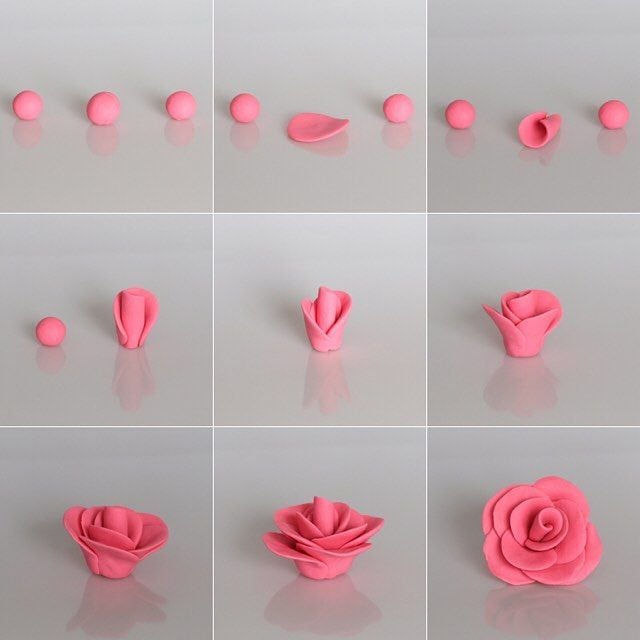Creative Playdough Projects for Kids
Welcome, parents! If you’re looking for ways to engage your little ones in an afternoon filled with fun and creativity, you’ve come to the right place. Playdough is not just a colorful and malleable substance; it’s a tool for learning and artistic expression that can keep children entertained for hours. Let’s dive into the wonderful world of playdough creations!
Why Playdough is Fantastic for Your Child’s Development
Before we get our hands squishing and shaping, here’s a little snippet about why playdough is a superstar in the world of play. Playing with playdough isn’t just fun – it’s also fantastic for developing fine motor skills, enhancing hand-eye coordination, and encouraging creativity. As children roll, shape, and mold the dough, they’re also building strength in their hand muscles and developing control over their movements. Plus, the process allows them to express themselves and transforms their imaginative ideas into tangible forms.
Ideas to Spark Creativity with Playdough
Are you ready to unleash a world of color and creativity? Here are some delightful playdough activities that you and your child can enjoy together:
- Playdough Animals: Encourage your children to create their favorite animals using playdough. This not only sparks their imagination but helps them learn more about different animal characteristics.
- Playdough Food: Who’s ready for a feast of imagination? Making playdough food items is a great way for kids to role-play and learn about different kinds of food.
- Playdough Shapes and Numbers: Use playdough to sculpt shapes and numbers, which can be an excellent way for children to learn basic math concepts in a tactile way.
Now, let’s get started with some easy-to-follow playdough project ideas. Remember, it’s all about the process, not the end result – so encourage your kids to enjoy making their creations as much as they’ll love the finished product!
Getting Started: Simple Playdough Recipes
Before we jump into the crafts, did you know that you can make your own playdough at home? Homemade playdough is easy to make, non-toxic, and can provide an additional layer of fun to your playdough adventures. Here’s a quick and simple recipe to whip up a batch of homemade playdough:
Note: Be sure to supervise your children while making the playdough and during play, especially if they’re of the age where they might try to eat it.
Homemade Playdough Recipe
- 2 cups of flour
- 2 tablespoons of vegetable oil
- 1/2 cup of salt
- 2 tablespoons of cream of tartar
- 1 to 1.5 cups boiling water (adding in increments until it feels just right)
- Food coloring (optional)
- A few drops of glycerine for shine and stretch (optional)
Instructions:
- Mix the flour, salt, cream of tartar, and oil in a mixing bowl.
- Add food coloring TO the boiling water then into the dry ingredients (color can also be added at the end for a more hands-on experience).
- Stir continuously until it forms a sticky, combined dough.
- Allow it to cool down slightly and then knead it vigorously until all of the stickiness is gone. If it remains a little sticky, add a touch more flour until it’s just perfect.
- Add a few drops of glycerine for a shiny, stretchier texture (optional).
- Once done, store the playdough in an airtight container to keep it soft and ready for use.
Playdough Creations Gallery
Visual examples can be especially helpful in guiding your child’s next playdough masterpiece. Here are a few ideas to get those tiny hands busy:
- The Undersea Adventure: Create a vibrant underwater scene with playdough fish, corals, and even a treasure chest!
- The Busy Cityscape: Construct buildings, roads, and vehicles to create a bustling playdough metropolis.
- A Playdough Garden: Mold flowers, insects, and garden tools for a blooming playdough garden.
With your homemade playdough ready and a few ideas to start with, you and your child are all set to begin your playdough journey. In the next section, we’ll explore step-by-step guides for each playdough project, along with tips and tricks to enhance the playdough experience. So grab that rolling pin, set aside your worries, and prepare for a delightful session of crafting and laughter!
Remember, it’s not just about the outcome, but the moments spent together, learning, and giggling that truly count. Stay tuned for incredible playdough projects that will spark your child’s creativity and provide hours of educational play!

5 Essential Tips for Playdough Preparation and Play
Before we roll out the playdough and start our sculpting adventure, here are five handy tips to set the stage for a seamless and joyful playdough experience:
1. Creating a Play-Friendly Environment
Designate a play area that’s easy to clean and won’t have you fretting over a little mess. A plastic tablecloth or a wipe-clean mat can be a perfect base for playdough activities. It’s also a good idea to keep playdough tools and accessories within reach to inspire creativity without interruptions.
2. Embrace the Learning Process
As you and your child embark on creating with playdough, focus on the fun and educational experience rather than aiming for perfection. Celebrate their effort and praise them for their unique ideas, this will boost their confidence and make the learning process enjoyable.
3. Mix Learning with Play
Incorporate learning opportunities into playdough time by discussing colors, counting objects they make, or even introducing basic scientific concepts like cause and effect. These moments can be subtly educational and incredibly rewarding.
4. Encourage Clean-Up Participation
Teach responsibility by having your child help with the clean-up. You can make this fun by singing a clean-up song or making a game out of it. Plus, it establishes good habits for future play sessions.
5. Store Properly for Longevity
After play, ensure the playdough is stored correctly in airtight containers to prevent drying out. Teaching your child to take good care of their playdough will extend its life, making it ready for their next burst of imagination.
By keeping these tips in mind, you’re all set for a fantastic playdough session with your child! Remember, the key to a successful playdough adventure lies in enjoying the moments of creativity and bonding as you both mold, craft, and learn together. So let the playdough fun begin!
Diving Into Playdough Projects
The beauty of playdough lies in its infinite possibilities. Whether you’re creating a zoo of wild animals or a batch of colorful pastries, playdough can bring those ideas to life. Let’s roll up our sleeves and jump into some exciting projects your child will love:
- Playdough Portraits: Flatten circles to craft faces and use different colors to add features like eyes, nose, mouth, and hair. This is a fantastic way for kids to express what they see and feel.
- Fantasy Creatures: Merge the wonders of imagination and mythical tales by creating creatures like unicorns, dragons, or fairies with vibrant colors and sparkling accessories.
- Letter and Word Formation: Practice letters and build simple words with playdough to nurture early literacy skills in an engaging and tactile manner.
With every project, your child unlocks a new level of imagination and dexterity. These activities not only bring joy but also pave the way for educational development, sensory play, and a host of fine motor skills.
So, take this guide, harness your creativity, and watch as your child’s world expands with every squish and shape of playdough. It’s time for you to create memories and masterpieces, one playful moment at a time!
See more great Things to Do with Kids in New Zealand here. For more information see here
Disclaimer
The articles available via our website provide general information only and we strongly urge readers to exercise caution and conduct their own thorough research and fact-checking. The information presented should not be taken as absolute truth, and, to the maximum extent permitted by law, we will not be held liable for any inaccuracies or errors in the content. It is essential for individuals to independently verify and validate the information before making any decisions or taking any actions based on the articles.




